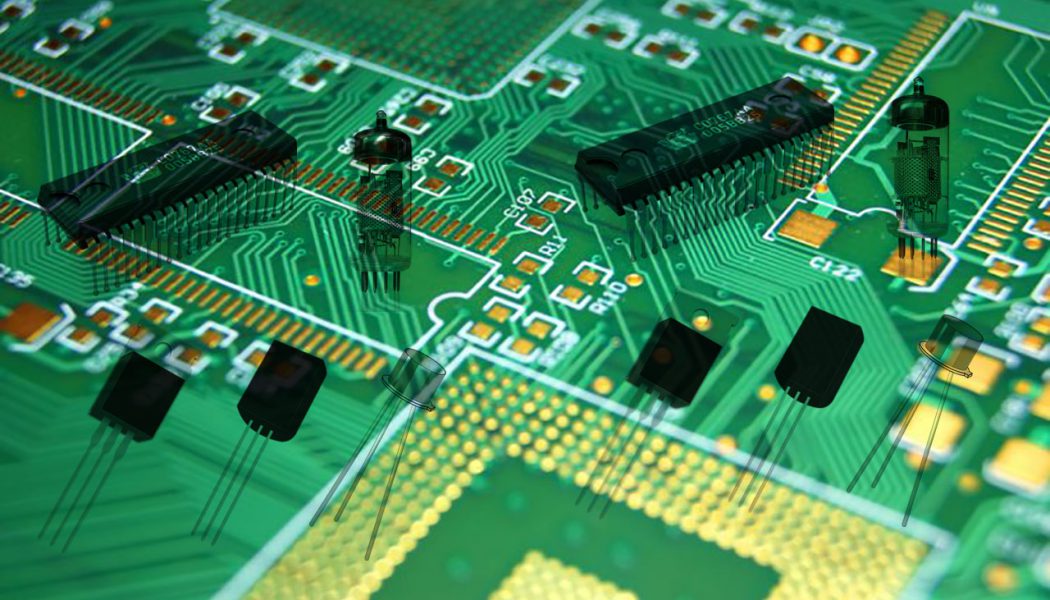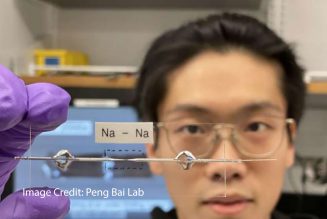Not many people would have forgotten about the old Vacuum Tube Radios and Sound Amplifiers. But the younger generation may hardly recognize it. For them, the tiny Transistors may even be strange for we are now in the Chip-Age. I am a person who always admires the old Vacuum Tubes, though I find it most convenient to be in the world of Integrated Circuits or Chips, for electronic circuits.
We will look into the history and see the transition from from Valves to Transistors and then to Integrated Circuits. But before that, let us recap what exactly is a Vacuum Tube.
Vacuum Tube
A Vacuum Tube is known as an Electron Tube and a Valve, though its colloquial name is Tube. This is also known as a Thermionic Tube or Thermionic Valve as it works on the principle of Thermionic Emission of Electrons from a heated source called Cathode.
Thermionic and Non-Thermionic Valves
Valves basically have a Cathode and an Anode. Cathode is a Negatively Charged electrode at a very high Temperature, heated by a filament. A basic Diode contains just Cathode, Anode (Plate) and the Filament. The Diode was invented in 1904 by Mr. Jogn Ambrose Fleming.
The electrons travel from Cathode to Anode and the flow of electricity happens. These electrodes are enclosed inside a Vacuum Glass Tube or Tube filled with a gas. This is the Thermionic Tube. If the electric polarity of Cathode and Anode are reversed in a Diode, flow of electrons does not happen and the Diode Blocks electricity.
Another type of Valve, which is Non-Thermionic in nature, achieves emission of electrons through the Photoelectric Effect. Electrons are emitted from a surface when light or an electromagnetic radiation falls on it. These types of Tubes or Valves are known as Phototube.
These Valves or Tubes, with added elements called Control Grids were used in building various electronic instruments such as Radio, Television, Amplifier, Radar, Telephone Networks, early Analog, Digital Computers, Testing and Measuring Instruments etc.
The Valves operated at very high temperatures and needed high operating voltages. The instruments or circuits made using these Valves were very bulky as well. But the output quality was excellent.
Classification of Valves
Valves were classified depending upon the number of electrodes they have, the frequency range that they were used in, their power rating, function etc. We had Diodes (2 electrodes), Triodes, Tetrodes, Pentodes etc., depending upon the active electrodes in the valves. The old Television Picture Tubes, known as Cathode Ray Tubes (CRT) are the advanced versions of the Thermionic Valves or Tubes.
Semiconductors
Research, Development and Improvisation of the Tubes saw a drift in the technology with the invention of Semi-Conductor Devices in 1940s. Semiconductor materials such as Silicon, Germanium and Gallium Arsenide) can act as a Conductor as well as Insulator by just adding an impurity into it (called Doping). The basic semiconductor is again the Diode which allows flow of current in one direction only. These semiconductor devices later replaced the Vacuum Tubes. They use conduction (of electricity) in the solid state and hence known as Solid-State Devices unlike the Gaseous State or Thermionic Emission in Vacuum Tubes.
Transistors
Transistors are discrete devices manufactured using the Semiconductors. It is a device used in the amplification of electronic and electric signals. Transistors are also used as Switches. There are at least three Terminals for a Transistor – called the Collector, Emitter and Base.
With the invention of Transistors, bulky Tube Radios and Devices gave way to the smaller Transistorized versions of them. They were compact, required only very less power and did not generate heat in normal conditions. They revolutionized the Electronic Industry and various types of Transistors are in place for different purposes. This saw pocket sized radios and devices at later stages. However, discrete components were to be assembled on one single Printed Circuit Boards (PCBs).
Integrated Circuits – Chips
Since the invention of Transistors, developments were on making the circuits compact and thus lowering the size as well as production costs (for a mass production). One complete Electronic Circuit, utilizing hundreds of discrete components like Transistors, Diodes, Resistors, Capacitors etc. could be packaged into a very small component using the Integration technique. This the beginning of the Integrated Circuits or called commonly as Chips.
The size of the devices or equipment made using the Integrated Circuits (ICs) or Chips could be reduced drastically. Small Scale Integration (SSI) is where an IC contains fewer than 100 Components. Medium Scale Integration (MSI) is where it is up to 500. LSI is Large Scale Integration containing between 500 and 300000 components. An IC containing more than 300000 components per chip uses the Very Large Scale Integration (VLSI). VVLSI is Very Very Large Scale Integration containing more than 1500000 components per chip.
Comparison between Discrete Circuits and Integrated Circuits
| Discrete | Integrated |
| Circuits require comparatively high voltage to operate | ICs work on low voltages |
| Can handle much more power than Integrated Circuits | Can handle only limited power |
| They need large space for an entire circuit | They occupy only very little space for a circuit |
| Manufacturing Cost more than ICs | Very cheap |
| Performance is inferior to ICs | Performance more than that of circuits employing discrete components |
We are now living in the era of VVLSI or sometimes more complex than that. The transition was gradual but the effect was drastic. It is very interesting to follow the transition and as I said, I am a person who had an opportunity to witness the transition and be a part of the changes. I used to be active on Electronics Projects until 1985 when I shifted my domain to Computers, Programming, Data Processing and Software. My ambition is to go back to the interesting realm of Electronics very soon.

